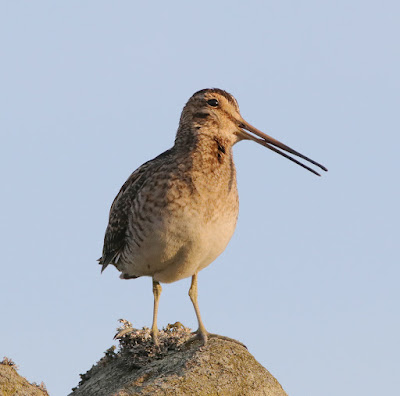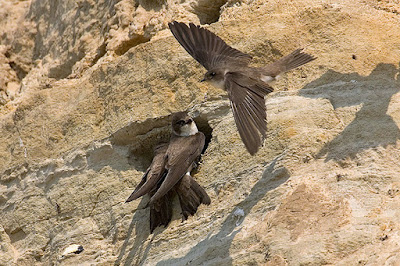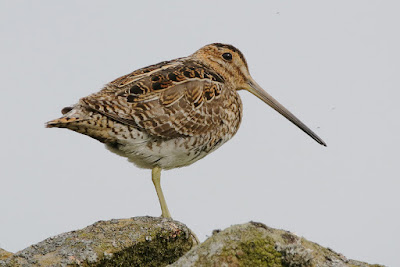I was due to meet Andy at 0630 for a go at catching Sand Martins. But first there was an hour or so in which to take a look at Conder Green.
I heard the first Greenshank of the autumn and then saw it fly across the pool towards the east side. As usual two Avocets were on the far side and out of sight but I guessed they had a youngster in tow when all hell broke loose as they and other birds took to the air in protest at something or other.
A gang of Oystercatchers joined in the melee as did Shelducks, Lapwings, a single Black-tailed Godwit, a couple of Redshanks, two Little Egrets and also the two Common Terns from the floating island. Three Common Sandpipers dashed across the water as for safety one of them stood alongside a Common Tern on the floating pontoon. Four Tufted Duck panicked across the pool as the single Little Grebe kept a safe distance in the deeper part of the water.
Greenshank
I looked hard in the sky and on the ground but saw nothing until a Red Fox strolled out from behind the far island and made its way through the lengthy grass and off towards the main road. All returned to normal, the fox's cover well and truly blown by the concerted efforts of the Conder Pool Residents Association.
My sighting probably explains the poor showing of ground nesting birds here this year with very low numbers of Lapwing, Oystercatcher, Redshank and Avocet chicks. Studies show that foxes take a large number of wader eggs and also wader chicks that have yet to fly. The relatively shallow water between the landmasses here means that a fox could probably wade or swim through water to reach most of this or any year’s nests and/or to find ground hugging chicks.
A major reason for the Red Fox's success is its varied eating habits. They are omnivore which means they eat virtually anything they come across. They have a major a reputation for taking poultry, but very often undesirables such as rats and slugs. They will also eat fruit, berries, roots and carrion, plus in cities, discarded takeaways in the shape of chips, pizzas and kebabs, with their particular favourite a KFC or McDonald’s. Rather them than me.
Red Fox
That was about all I saw apart from a few Sand Martins and a passing Kestrel. It was 0620 and time to meet Andy a mile or so away at Cockerham Quarry.
There seemed to be plenty of martins around, 270+, as well as a Grey Heron, Common Sandpiper, several piping Oystercatchers and Chris’ gaggle of farmyard geese.
By now the previous almost zero wind had picked up to 8 or 10 mph and although not ideal we set a net away from the colony holes but where the martins pass through. We caught another nine to add to our first effort of two weeks ago, 5 adults and 4 juveniles.
Sand Martin
This afternoon the sun emerged from hiding, the first in four days. Now that’s more like it.
Linking this post to Stewart's World Bird Wednesday and Anni's Birding Blog.
Linking this post to Stewart's World Bird Wednesday and Anni's Birding Blog.




















































.jpeg)












.jpg)












